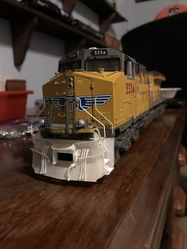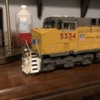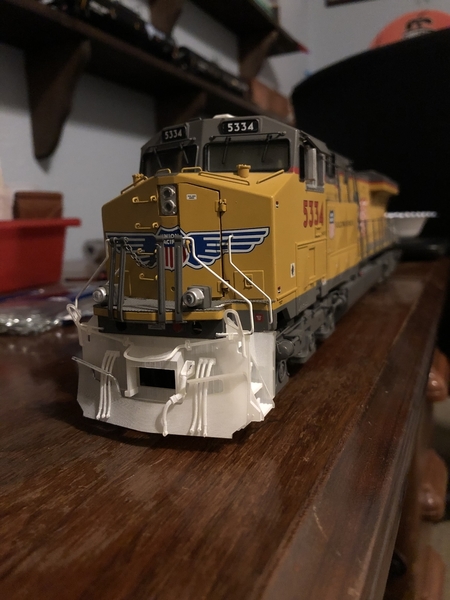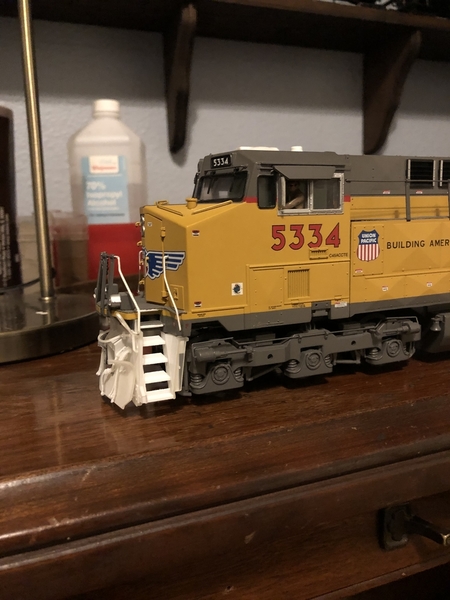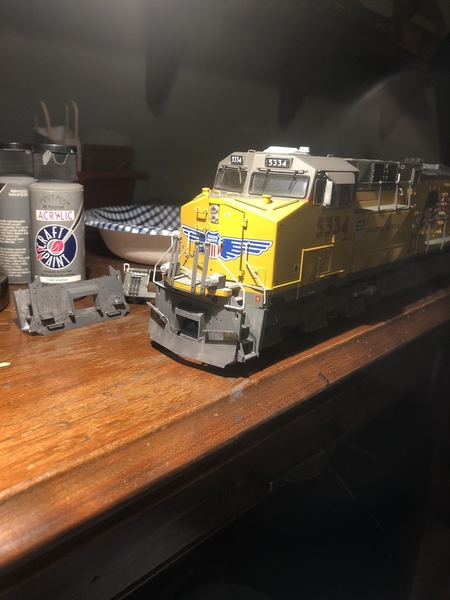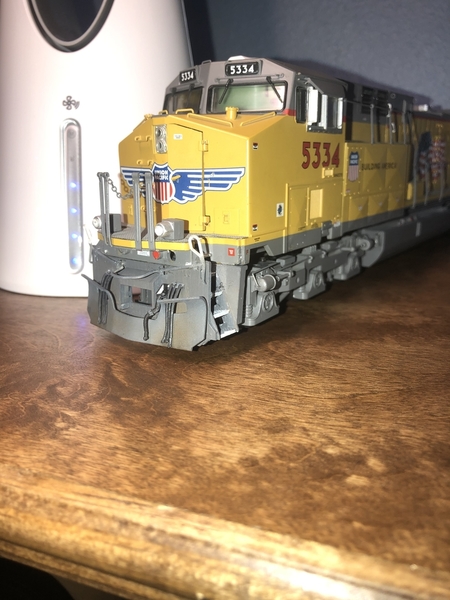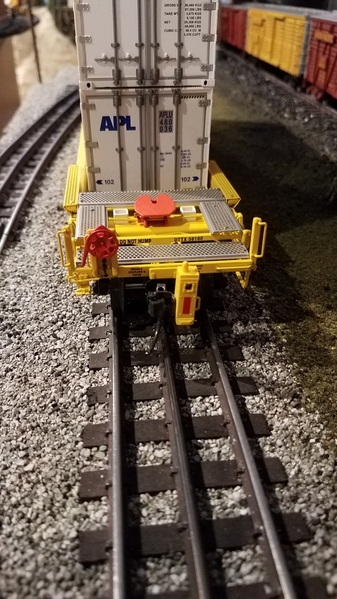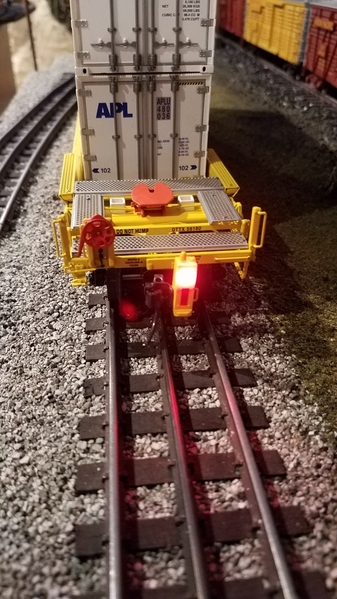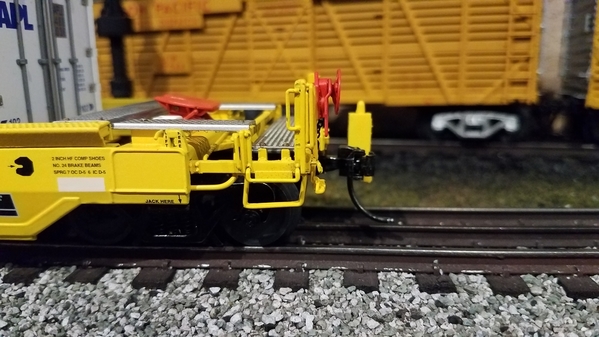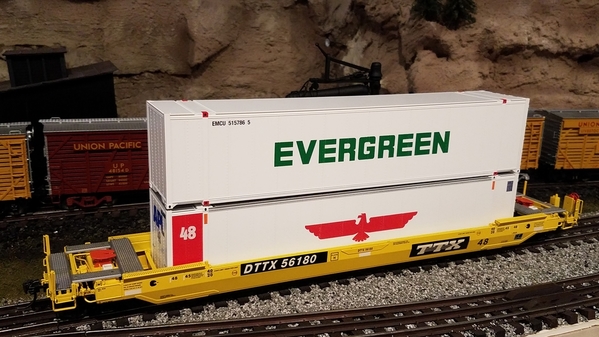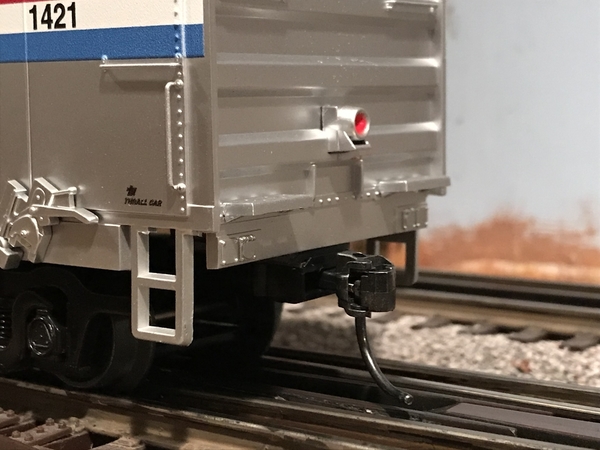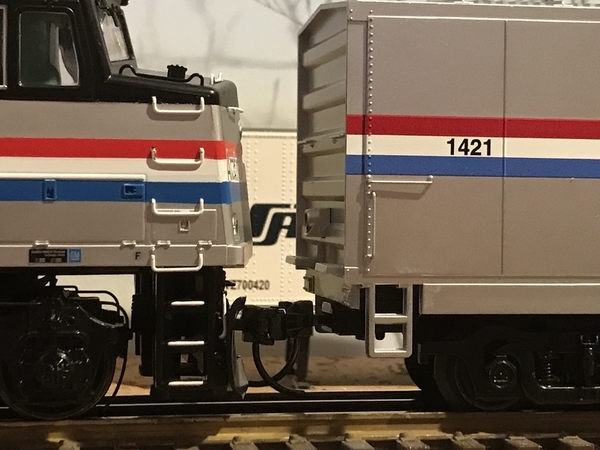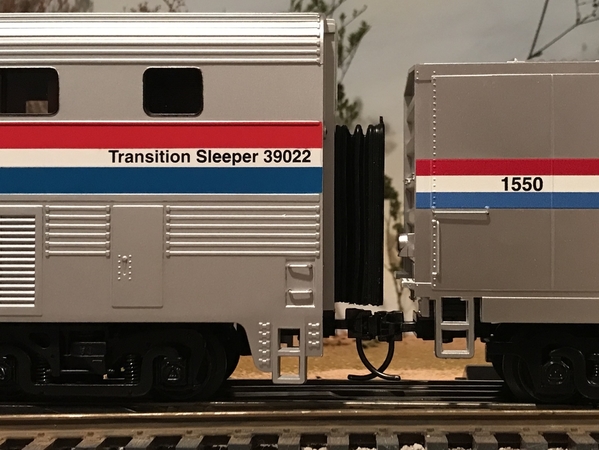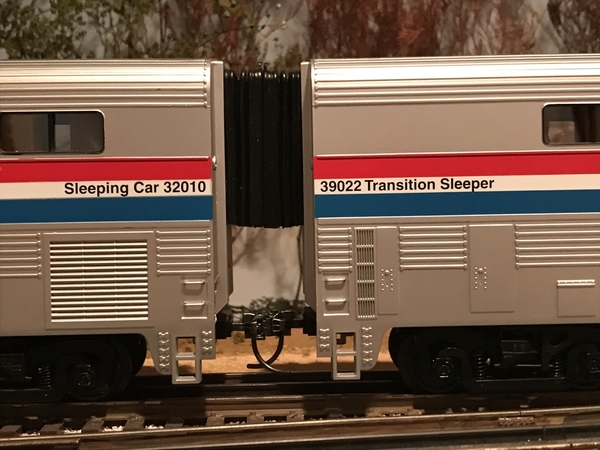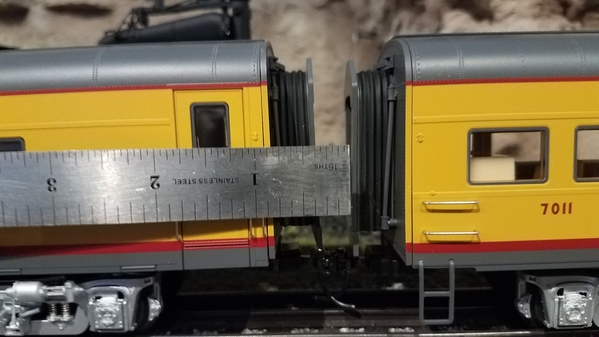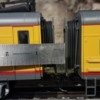Mario - Excellent as always! Loved the comparison to stock. Shows what you can do with some tenacity. I know you love to hound those things until you can live with them.
Attachments
Logan, wow those pilots look awesome!!! I use Microscale 1/8" yellow striping decals, they work perfect for this application. The handrails can be replaced using brass wire, .025" from Tichy Group. Remove the end rails and replace with hand-formed wire.
Jeff78rr posted:Logan, wow those pilots look awesome!!! I use Microscale 1/8" yellow striping decals, theybwork perfect for this application. The handrails can be replaced using brass wire, .025" from atichynGroup. Remove the end rails and replace with hand-formed wire.
Thanks!
CNJ #1601 posted:Dave_C posted:Joe, really nice job on the Rutland car. Can you comment on the chalk marks. Nice detail touch that really adds to the look of the car. I've done a couple of cars with some Clover House dry transfers. Are these commercial products your using or are you doing these free hand ?
Thanks, Dave! I make the chalk marks free hand with a combination of white or light gray colored pencils sharpened to a fine point.
I was just recently thinking of posting a question about this What are the chalk markings? Who would have written and what message etc. Also the wooden placards, what for? In old photos and videos they seem to usually not have any postings on them and are surprisingly often well painted.
pennsy484 posted:CNJ #1601 posted:Dave_C posted:Joe, really nice job on the Rutland car. Can you comment on the chalk marks. Nice detail touch that really adds to the look of the car. I've done a couple of cars with some Clover House dry transfers. Are these commercial products your using or are you doing these free hand ?
Thanks, Dave! I make the chalk marks free hand with a combination of white or light gray colored pencils sharpened to a fine point.
I was just recently thinking of posting a question about this What are the chalk markings? Who would have written and what message etc. Also the wooden placards, what for? In old photos and videos they seem to usually not have any postings on them and are surprisingly often well painted.
Hey Jeff, I just saw your post above from last night. Click on the links below to read some info from the web regarding chalk marks and placards...
In regards to the tack boards, the large ones on the car doors were usually for shippers information and fragile or "Do Not Hump" signs. The smaller tack boards on the side sills were for clean out tags, shop tags, or weigh cards. As to the chalk marking, we called them pool marks and were used by car inspectors to show that that car had been inspected at a certain date by a particular inspector. These marks were at the ends of the cars and had a cross thrrough them. You could also leave a note to another inspector as to stop bleeding the cars at that point or to have a second look at a possible problem with that car. I also would chalk an arrow pointing to the bleed rod to make it easier to see at night. Later we used white spray paint for this and also to paint the tops of the angle cock handles for the same reason.
Joe A. and YardRat, thank you, great info!
It seems that in the old videos and photos of full out trains there are no cards on the boards. Maybe I just never really look quite close enough. Would the cards usually get removed before the train hit the main line?
YardRat, you said "inspected at a certain date by a particular inspector. These marks were at the ends of the cars and had a cross through them", so initials and date would be a prototypical thing to scribble? Also, sorry for being dense, but can you elaborate on "a cross through them". Do you mean that one guy would inspect and write it, then someone else downstream would check it off by crossing through it? Or is that at next inspection the guy putting his initials and date would cross off the previous marking?
Finally, why do I care so much about these things? You guys understand that as well I am sure. ![]()
Jeff, The cards would stay on the cars once the train hit the main with the exception of shop tags. Those cars would be required by the FRA to be repaired at the point where shopped or if on the road (main) at the nearest location. The chalk marked cross or X would have the inspectors initials, pool mark, date and location one in each of the four quadrants of the cross . This was used for that particular yard's use only, it didn't mean much once the car left that yard. A new pool mark would be added at the next terminal usually next to the previous one and it would start all over again. This pool mark system was in use when I hired on in the mechanical department in 1974 with Penn Central. With Conrail in the early eighties we no longer used this system unless some one missed something big and it caused a major derailment. Then we would break out the chalk and start pool marking again. Eventually we were instructed to use a form (CRB-8 if I recall) and provide the first and last car numbers in our section of each train we inspected. We were wholly responsible for those cars. Glad to help out, and yes I do understand trying to be as prototypical as possible.
Sorry the image is no longer available, I’ll try to repost it. They are 3D printed, and I got them from Shapeways. Here is the link to the forum talking about it.
Attachments
Attachments
Attachments
Here you go.
Completed the Kadee installations on my steam fleet, Niagara yesterday and Hudson today.
Attachments
Rich, that looks great! Love the touching diaphragms!
Kadees on Lionel 21" Challenger Passenger Cars using the pre-drilled holes and the included bracket....
Kadees mounted 3/16" back from OEM drilled holes....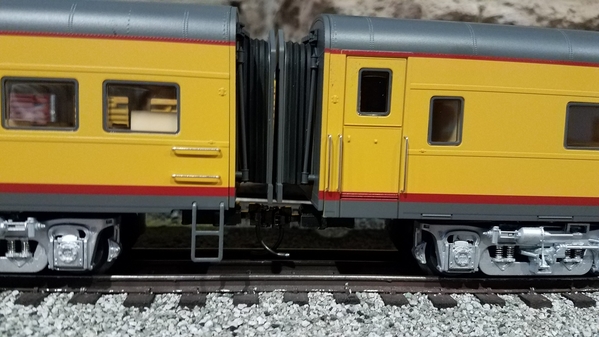
This were the first two cars I did. Later cars I set the new mounting hole back 1/4" and the diaphragms touch perfectly. BTW the diaphragms have a great deal of give or sponginess. They compress very easily. These are very nice cars, and with a little work (paint interior, add passengers and a few details) these cars will be awesome!




